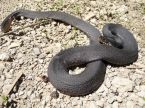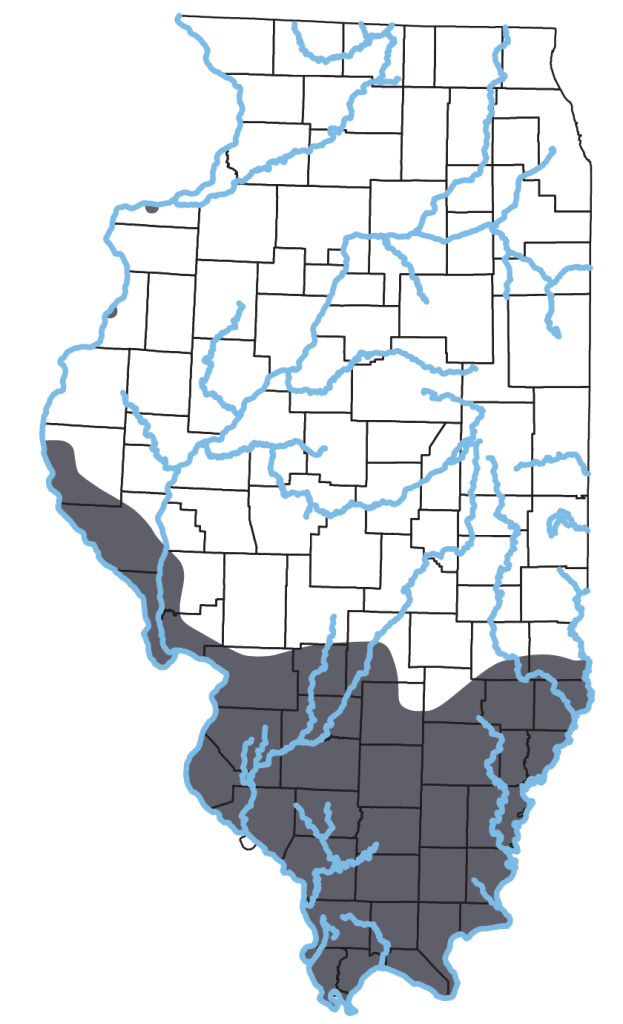Nerodia erythrogaster (Forster, 1771)



Key Characteristics: Yellow or orange unpatterned belly; back scales strongly keeled; anal plate divided; back of newborn marked with black blotches, but darken within a year.
Similar Species: North American Racer, Gray Ratsnake, Cottonmouth. Juvenile resembles blotched young of many other snakes. See the Key to Snakes of Illinois for help with identification.
Subspecies: No subspecies are currently recognized, although as many as four have been in the past. See Nomenclatural History below.
Description: Large (up to 140 cm TL), stout snake. Adult is uniformly dark brown or black, juvenile has 30 – 35 dark blotches. Belly usually yellow with no dark markings in N. e. flavigaster, usually bright orange with encroachment of dark side pigment onto belly scales in N. e. neglecta (more encroachment in larger individuals).
Habitat: Backwater sloughs, cypress-tupelo swamps, and lowland lakes and ponds with abundant vegetation and muddy bottoms. Often seen in nearby forest.
Natural History: Often leaves water to forage for amphibians. Mates in May and June and gives birth to 10-20 young in late July or August. Newborn are 20-28 cm TL. Diet includes fish and amphibians. Predators include other snakes, large shore birds, mink, and raccoons. Often killed by people who mistake it for cottonmouth.
Status: Common in the appropriate habitat. Threats include drainage of wetlands, removal of aquatic vegetation, and loss of aquatic border habitat suitable for amphibians.
Etymology: Nerodia – neros (Greek) meaning flowing, liquid; or (Greek) for Nereis, a Greek sea nymph; erythrogaster – erythros (Greek) meaning red; gaster (Greek) meaning stomach, belly.
Original Description: Forster, 1771. A catalogue of the animals of North America. In J.B. Bossu. Travels through that part of North America formerly called Louisiana. London. Vol. 1:364.
Type Specimen: Neotype. USNM 126890.
Type Locality: Not stated.
Original Name: Coluber erythrogaster Forster, 1771
Nomenclatural History: Davis & Rice (1883) used the combination Tropidonotus sipedon erythrogaster to refer to this species. Garman (1892) used Nerodia sipedon Var. eryhthrogaster. Smith (1961) listed two subspecies (N. e. flavigaster & N. e. neglecta) as occurring in Illinois, but Makowsky et al. (2010. Mol. Phylogenet. Evol.55: 985-995) showed that there is no concordance between named subspecies and mtDNA.


